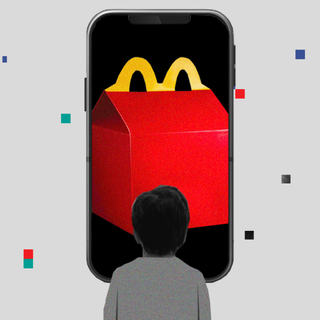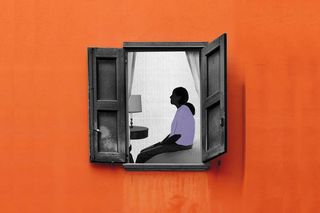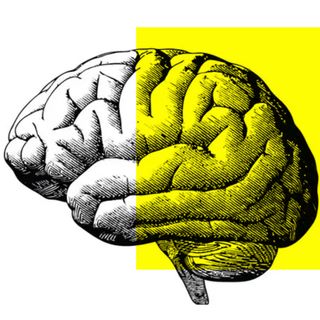
The Pandemic Has Changed Intimacy For Good
What happens when the entire world experiences chronic loneliness?

In 1966, The Beatles looked at all the lonely people with intrigue. “Where do they come from?” asks Paul McCartney, as he speaks of an old lady who lives alone with a crystal radio set. But ask this question today, 55 years later, and people may speak of themselves, referring to the somber and sobering days spent in the pandemic.
As grief and loneliness became the norm in the Covid19 pandemic, people’s idea of intimacy too changed. Friends, family, partners — no relationship looks the same anymore, despite how much or little we meet people.
Take Neha Chandra, who doesn’t quite remember thinking about intimacy in definitive terms before Covid19. “It was a fast-paced life, going out, meeting people organically, not even thinking who I’m meeting or the connections I’m making,” the 26-year-old says. “It just happened,” as these things used to happen to people back then.
The post-2019 Neha thinks of that life, that bygone world, with amused fascination. For her, intimacy now involves “spending a lot of time alone.” What changed? There has been so much loss, she says, “loss of friends, loss of reality.” This loss has had an impact on the intimacy we collectively knew and understood.
Before the pandemic, people constructed intimacy on abstract feelings of understanding and comfort. Jalasmi, 25, recalls time spent drinking chai at the tapri near her home; Prachi, 26, thinks of hugs and long strolls.
Nahfeez, 24, remembers how the first wave changed him; his mental and physical health was at an all-time low. “I find myself in this space where I feel lonely and crave intimacy but the thought of meeting people gives me anxiety,” he says. Loneliness feels almost endemic now.
“There are challenges to maintain [intimacy], even with people who we feel close and immensely connected to,” Nidhi Thakore, a clinical psychologist, tells me.
The psychological effects of losing our closest ties and the emotional succor we found in them can be profound. And perhaps it is possible to go back to connecting with people like before once the stressors of the pandemic, such as the fear of going out, have passed. But research shows how acutely the pandemic has changed our relationship with physical spaces and people. “[The pandemic] measures carried a strong psychological message, which is the fear of others,” an editorial published last year explained. Another paper, published in Nature last year, showed how virus-linked fear and stress directly compromise a person’s psychological reservoir – for instance, their ability to empathize with others.
“It feels like the wires of emotional connection have become tangled like idle earphones, and we’re slowly untangling them,” says Jalasmi.
***
Science over the last two years reached a grim conclusion — the pandemic may have disrupted our accustomed, yet pathological, ways of relating to others, according to disquieting research. Sagar Shah, 24, can understand why. “I feel emotionally dried out. It is very difficult to go on with conversations. It may not just be the grief, but loneliness in the pandemic did change me.”
Intimacy is built on sharing your authentic self and trusting people; in some ways, it is like a muscle that needs to be exercised. As people withdrew from others during the pandemic — physically and emotionally — it caused the muscle to atrophy. There is a recurring meme that captures this absurdity: “I wouldn’t recognize a hug if it were to stare me in the face.”
The biology of grieving shows how deeply loneliness affects the body and brain, altering our sense of self. Grief practically rewires the brain. The prefrontal cortex, charged with decision making, takes a back seat, while the limbic system that controls our emotions takes center stage. In other words, the pandemic has quite literally affected our collective psyche. A spate of reports captures the extent of Covid’s impact on individual mental health, leading to a troubling mix of anxiety, despair, depression, burnout, and more.
Moreover, any sort of individual or mass trauma (as the pandemic has been called), causes a fight-or-flight response in the body. This triggers stress hormones such as cortisol in the body, which can make people feel disconnected. “[O]ur fight-flight-or-freeze response may activate our body to be in a constant constriction and shut-down mode, not allowing us to relax enough to be intimate,” wrote Susanne Babbel, a psychologist specializing in trauma and depression.
Related on The Swaddle:
With the Pandemic in an Endless Loop, What Does Closure Mean?
“The ways of approaching intimacy have changed because our environment has changed and so have we in different capacities,” says Manvi Sharma, a counseling psychologist with Therapize India. Intimacy requires trust and safety to feel free enough to let go and be yourself, according to research. But safety is an impractical ask during a pandemic, where all surroundings feel too unsafe to be emotionally comfortable. Prachi, like many others today, feels paranoia crippling her mind whenever she hears a rogue sneeze or cough.
The Cigna Study on Loneliness, a national survey that explores the feeling, gauges people’s ability to be intimate on three statements: “I am no longer close to anyone”; “No one really knows me well”; and “My social relationships are superficial.” When A*, 23, thought about this during the pandemic, her answer for each was “I often feel this way.” This was not the case for her two years ago.
Nidhi believes that this is owing to the changes brought on by the pandemic. “Sometimes, people to who we are connected are not able to understand our lived experiences,” she says. In other words, despite everyone going through the same thing, each individual experience may be fraught in unique ways, making even existing bonds feel fickle.
“If we feel through experience or through assumptions that the other person will not be able to understand our grief, sadness, or feelings of isolation, then it leads to a decrease in emotional intimacy.”
Moreover, Nidhi adds, “people’s idea of what intimacy truly is has evolved and changed over the course of this pandemic.”
“Earlier, if couples and people were not able to see each other constantly, there would be this constant feeling of ‘something is amiss’ and that more time needs to be spent together,” she says. Now, many couples, especially those who have been together 24/7 during the course of the pandemic, “have realized that spending almost all of their time together also can take a toll on their relationship… Intimacy today can also mean being in the same house yet providing some time for personal space, it can also mean taking a break from people and reconnecting with oneself.”
Further, many people no longer relate to the version of themselves from before the pandemic. This can translate into feelings of depersonalization, guilt, and depression, which further disbalances people’s attachment equilibrium with others. “Personally, these two years have just made all the heartbreak and cravings numb. Feelings have rusted,” Jalasmi says.
Related on The Swaddle:
How Lockdown Made a Woman Rediscover Herself, Be More Comfortable on Virtual Dates
But perhaps not all the ways in which the pandemic changed our understanding of intimacy have been bad. For one, “the literal and symbolic sense of staying indoors did open up possibilities to really sit with certain feelings, emotions, and experiences which we wouldn’t have had,” Manvi says. She mentions this may come not from a place of helplessness – but from a place of empowerment and hopefulness.
This inward intimacy may also do much for making people self-aware, respecting boundaries, and also carving personal space. To sit with oneself and be able to spend time in one’s own company is a very intimate experience. For Prachi, intimacy now looks like a sunny day spent gardening and reading.
Neha found it important to sever ties with people she was close with before the pandemic but didn’t feel connected to now. “[T]here were always these loopholes, these faults, these gaps in [existing] relationships that we ignored due to fast-paced life.” On her birthday this year, Neha chose to go on a trek instead of doing what her friends wanted to do. “I put my foot down… and I feel so liberated to have done that.”
That people are connecting more with themselves is also an act of intimacy. “The idea of self-awareness in intimacy is that we can maintain our own identity in a relationship while being fully aware of ourselves and how we are feeling,” clinical psychologist Shelley Sommerfeldt wrote.
Until now, the idea of human connection has been synonymous with “interpersonal” relationships with other people. Now, “people are more okay with saying no to a meetup plan and not giving in to overworking,” Nidhi points out, “because they do realize through thought or experience that focusing on one’s emotional and physical health should take priority, in order for them to be functional and live in the present.”
The grief, uncertainty, and loneliness of the pandemic feel like permanent fixtures. When intimacy changes to put ourselves at the center, our response changes too. According to Manvi, this redefined idea of emotional intimacy may then mean checking in with yourself and others, understanding one’s own boundaries – and honoring others. Research shows boundary setting is key in processing and recovering from any kind of trauma.
With that, we may also learn how to be better to the people we love, including ourselves. For Nidhi, this becomes a force of healing. “When an individual strives to achieve a better understanding of themselves, they are more clear and calm in what they want and what they would want to convey – to themselves and to others as well.”
It brings to mind celebrated writer and feminist bell hooks’s words: “Knowing how to be solitary is central to the art of loving. When we can be alone, we can be with others without using them as a means of escape.”
So where do all the lonely people of today go? Home, to be alone. At least for now.
Saumya Kalia is an Associate Editor at The Swaddle. Her journalism and writing explore issues of social justice, digital sub-cultures, media ecosystem, literature, and memory as they cut across socio-cultural periods. You can reach her at @Saumya_Kalia.
Related


In a First, Scientists Find the Brain Region Linked to the Clitoris
